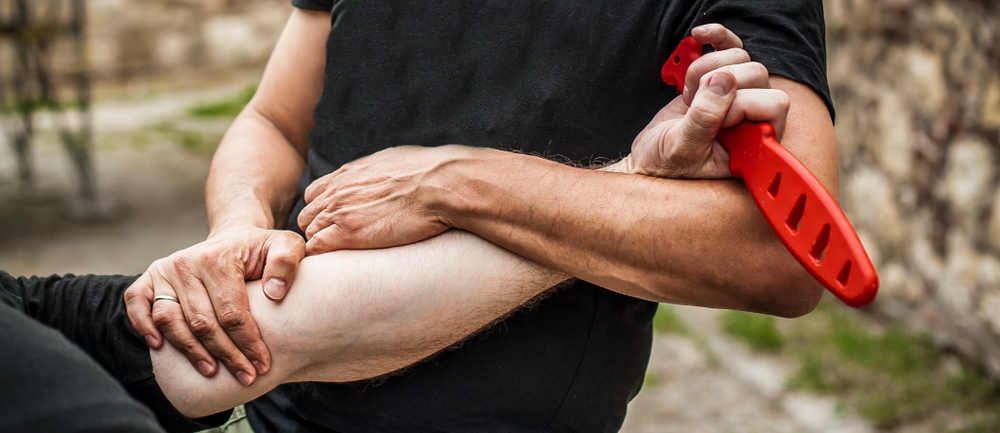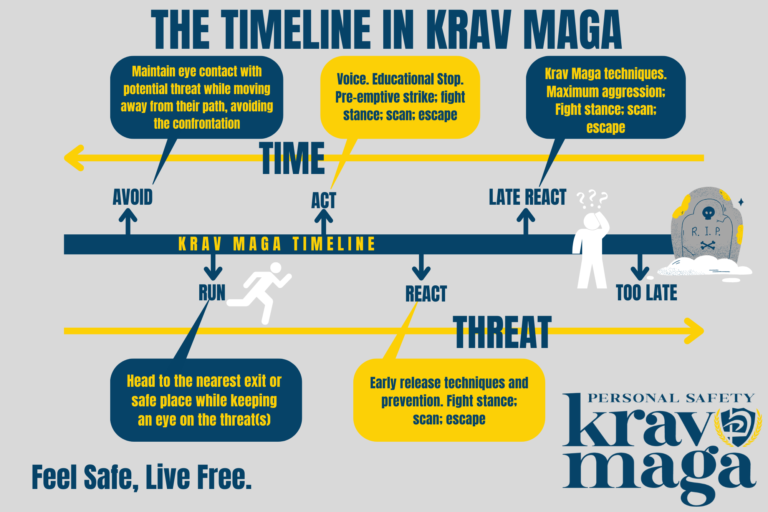One personal observation I can’t help but make is how many of my Krav Maga brethren have taken to social media or YouTube to showcase their self-defense prowess—while blindfolded. Don’t get me wrong, the skill is impressive, but the irony is hard to miss. These ego-driven demonstrations unintentionally highlight one of Krav Maga’s core truths: **you don’t need your eyes to survive a violent encounter**. In fact, the system was built for the smaller, slower, weaker defender—the one who starts the fight at a disadvantage. And in that reality, you can bet full visuals are a luxury, not a guarantee. So, if you’re training seriously for real-world violence, you’d better prepare to operate without your eyesight. That’s where “staying sticky” to your attacker becomes your lifeline.
Real-Time Awareness Through Physical Connection
One of the biggest challenges in street-level self-defense is the unpredictability of the attacker. When you stay attached—hands-on, controlling their movement—you remove the guesswork. Physical contact provides real-time feedback. You’ll feel when they shift their weight, reach for a weapon, or attempt an escape. This level of situational awareness is something you can’t get from a distance.
For anyone looking to improve their hand-to-hand combat skills, learning to stay connected gives you the upper hand—not just to defend, but to dominate.
From Contact to Control: Striking and Subduing
Self-defense techniques that work under stress must be simple, direct, and brutal; these are the underlying assumption sets of Krav Maga. Staying attached to your attacker puts you in the ideal position to launch effective strikes and apply joint manipulation or locks. There are, in fact, “on-ramps” on the human body that allow us to go from first touch and glide into targeted areas for pain and manipulation.
Here’s how staying connected opens the door to fast and decisive action:
– Sternum to windpipe – Start with a palm strike or punch to the chest, and your hand naturally follows the line up into the attacker’s throat. It’s quick, violent, and immediately disrupts their breathing and posture.
– Shoulder to elbow – A firm grip or pressure on the shoulder gives you perfect leverage to transition into an armbar or elbow lock.
– Cheek to eye – When your hand is on the side of the face, a sharp movement gives you instant access to the eyes for a blinding strike.
These aren’t flashy martial arts moves. These are battle-tested Krav Maga techniques taught in realistic self-defense classes designed to end fights fast.
Control Before Escape
It’s important to understand that control leads to survival. In any violent encounter, your primary goals are:
1. Neutralize the threat
2. Create an opportunity to escape
3. Get to safety immediately
Staying attached is your way of controlling the attacker’s movement, disrupting their aggression, and setting up your exit. Once you’ve delivered a disabling strike or achieved a brief submission, you don’t hang out to admire your work—you disengage and evacuate.
Krav Maga’s Philosophy on Violent Engagement
The entire philosophy of Krav Maga self-defense is based on practical, no-nonsense tactics for real-world threats. We don’t rely on rules, rituals, or formality. We rely on what works:
– Close the distance
– Control the attacker
– Strike vital targets
– Escape safely
That’s how we train. That’s how we survive.
Final Thought
If you’re serious about personal safety and real world self-defense, remember this: Staying attached to your attacker isn’t about wrestling—it’s about winning. Here at Krav Maga Personal Safety, we make sure that all of our students learn that staying close gives you control. Control gives you options. And options in a fight can save your life.
Train with purpose. Move with intent. Defend with power.




